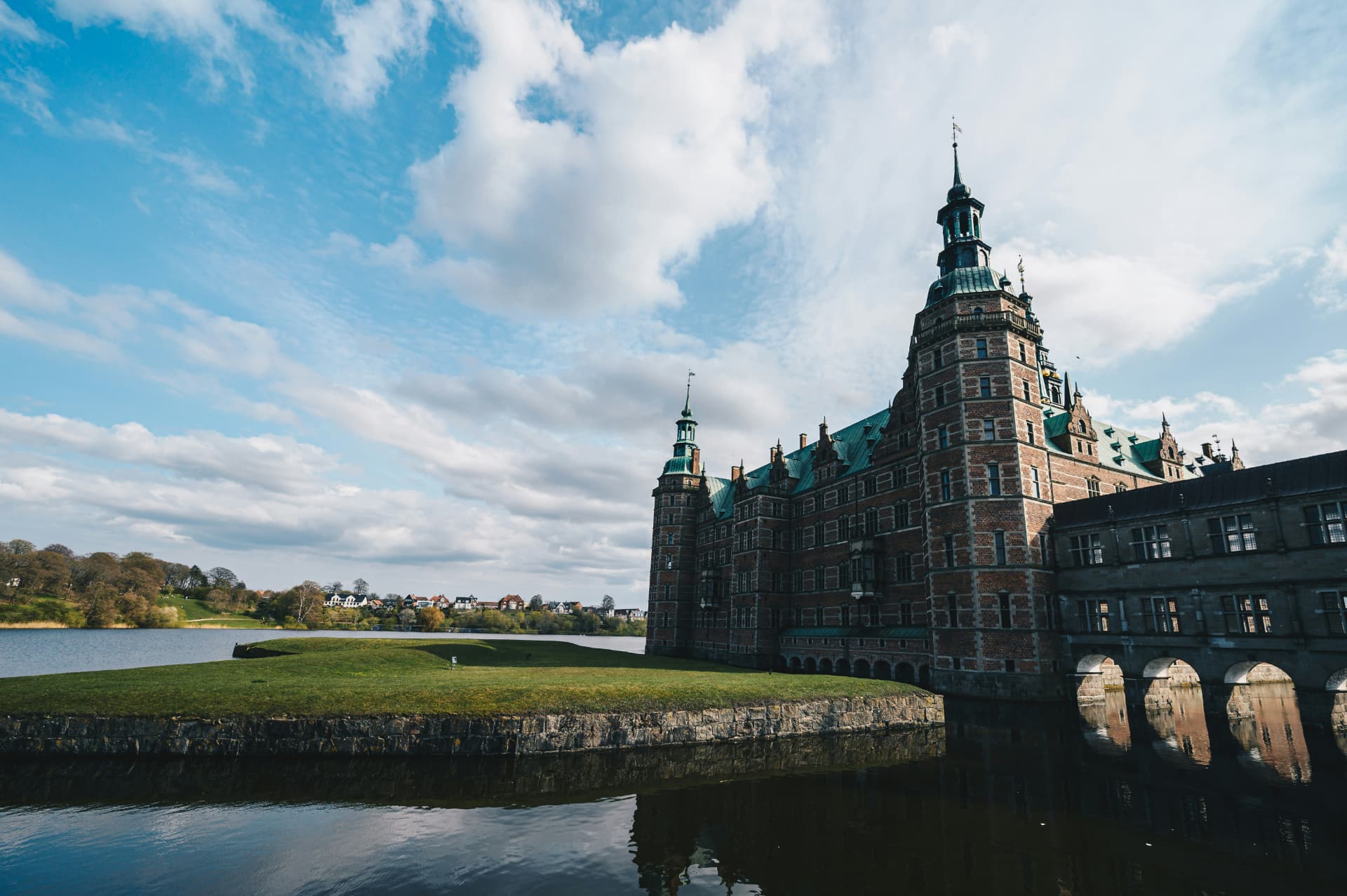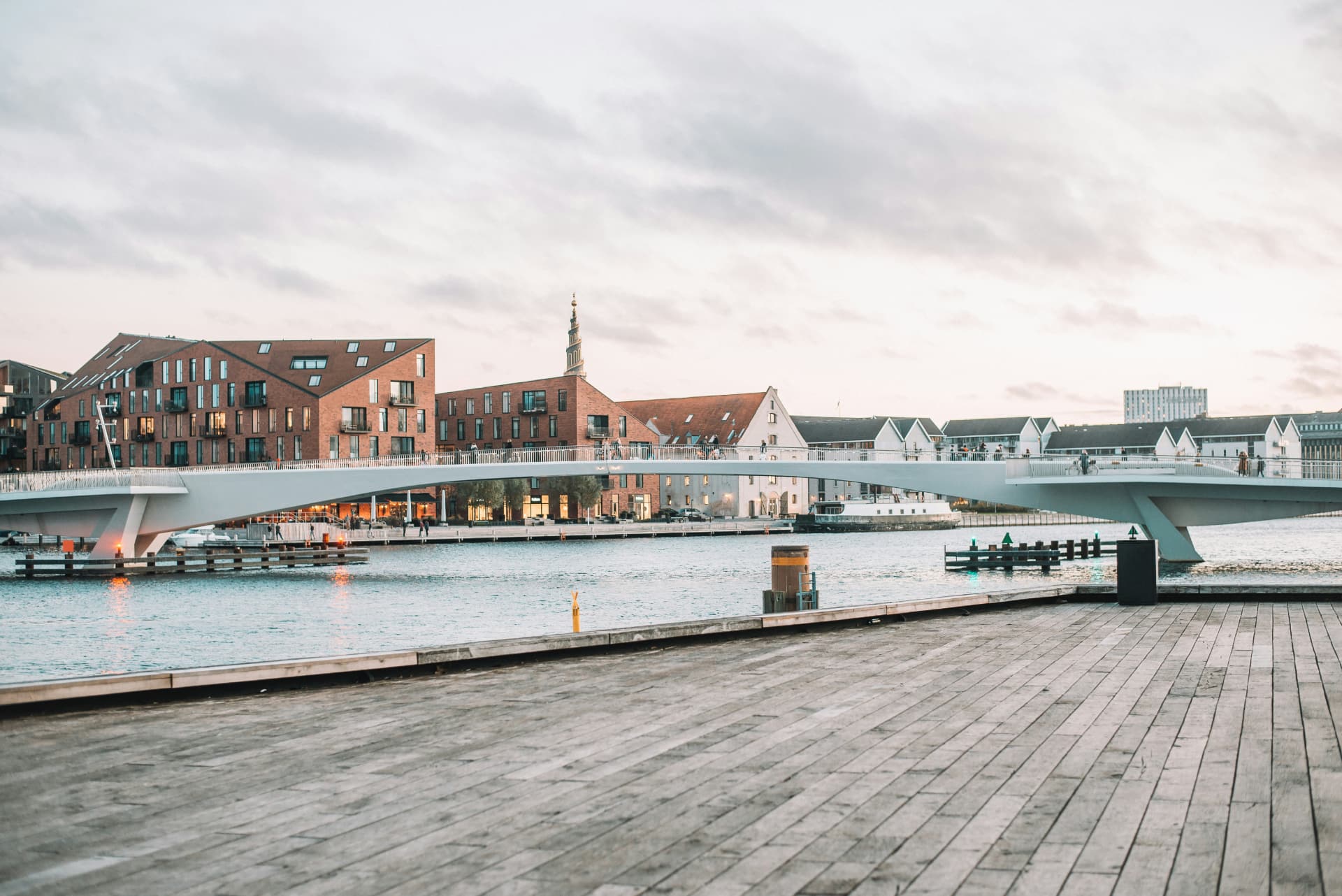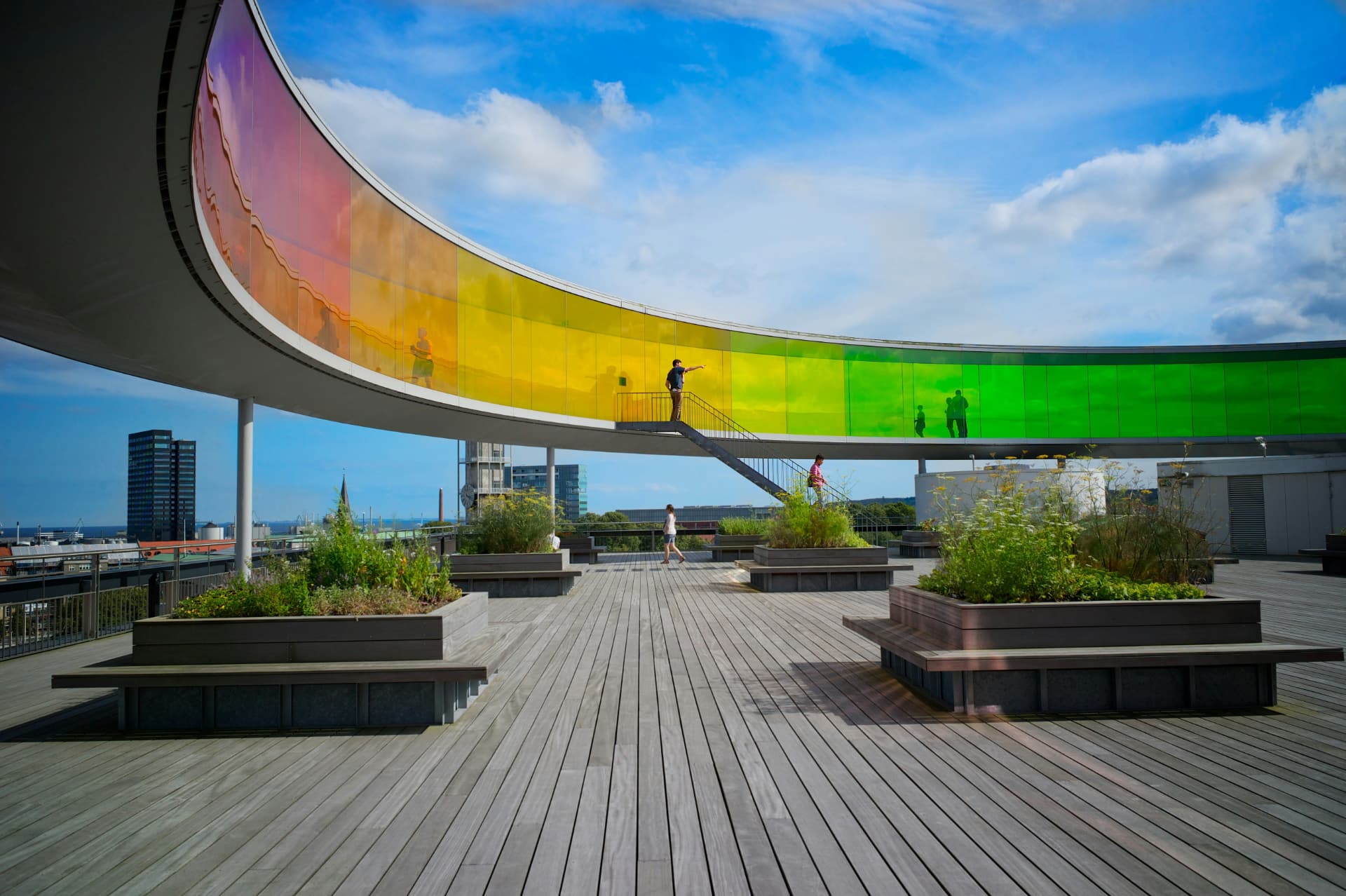Denmark, with its deep-rooted monarchical history, is a land where the past and present seamlessly blend, and nowhere is this more evident than in its stunning castles and palaces. These architectural marvels not only stand as a testament to the nation’s rich history but also continue to play a vital role in the cultural and social life of the country today. From the Renaissance grandeur of Kronborg Castle to the Baroque elegance of Frederiksborg Castle, each structure tells a unique story of royalty, intrigue, and artistry.
As we explore these regal residences, we will uncover the architectural beauty and historical significance of Denmark’s most famed estates. These castles and palaces are not merely relics of the past; they are active participants in Danish culture, offering visitors a vivid glimpse into the royal lifestyle and the architectural trends that shaped this Scandinavian nation.
Join us on a captivating journey through the majestic castles and palaces of Denmark, where each corner and corridor reveals the stories and secrets of Danish royalty. Whether you are a history enthusiast, an architecture aficionado, or simply someone who appreciates the finer aspects of cultural heritage, these historic sites promise to enchant and enlighten.

The History of Danish Royalty and Architecture
Foundations of Danish Royalty and Their Castles
The monarchy in Denmark is among the oldest in the world, having been established in the early 10th century. The Danish throne has witnessed numerous dynamic figures whose reigns have significantly influenced the architectural landscape of the country. From medieval fortresses to opulent baroque palaces, the evolution of Danish royalty is vividly reflected in its diverse array of castles and palaces.
Architectural Styles and Influences
Danish castles and palaces showcase a tapestry of architectural styles that have evolved over the centuries. Initially, the focus was on fortification, which is evident in the early medieval structures designed primarily for defense. As the threat of invasion receded and the focus shifted towards representation and beauty, Renaissance and Baroque influences began to emerge.
- Renaissance Influence: During the Renaissance, Danish architecture began to incorporate more artistic elements, emphasizing symmetry, proportion, and the use of classic decor motifs. Frederiksborg Castle is a prime example of Renaissance architecture in Denmark, with its ornate decorations and structured landscaping.
- Baroque Flourishes: The Baroque period introduced more dramatic elements, with emphasis on grand staircases, intricate frescoes, and expansive gardens. Amalienborg Palace exemplifies the Baroque style with its emphasis on luxury and impressive façade.
Key Figures in Danish Architectural History
Several monarchs played pivotal roles in shaping the architectural heritage of Denmark:
- King Christian IV (1588–1648): Known as one of Denmark’s most architectural monarchs, Christian IV left a distinct mark on Danish building style. He commissioned numerous buildings in Copenhagen and beyond, including the Rosenborg Castle, which was originally built as a summer house and later evolved into a treasury for the royal crowns and jewels.
- King Frederick II (1534–1588): He was instrumental in the construction of Kronborg Castle, which not only served as a royal residence but also as a strategic point to control the entrance to the Baltic Sea.
These architectural endeavors were not just about aesthetic appeal or royal vanity. They were strategic and cultural statements that projected power, influenced European architecture, and secured Denmark’s place in the annals of architectural history.

Exploring Kronborg Castle
The Icon of Danish Renaissance Architecture
Kronborg Castle, situated at the strategic point where the Danish Straits narrow between Zealand and Sweden, stands as a monument to Denmark’s historical significance in northern Europe. Built in the late 16th century during the reign of King Frederick II, Kronborg is not only an architectural masterpiece but also a key player in the history of northern Europe’s trade and military.
Architectural Highlights and Design
Kronborg Castle is renowned for its magnificent Renaissance architecture, characterized by its sandstone structures and copper-covered roofs and spires. The castle’s layout is symmetrical, a typical feature of the Renaissance style, with four wings surrounding a spacious courtyard. The intricately decorated ballrooms and the chapel with its original decor are highlights of the tour, showcasing the opulence typical of the period.
Kronborg in Literature and Culture
Kronborg Castle gained worldwide fame when William Shakespeare chose it as the setting for his tragic play, “Hamlet.” The castle hosts an annual event, “HamletScenen,” where actors from around the world perform the play in the very setting that inspired its creation. This not only celebrates the literary connection but also attracts Shakespeare enthusiasts keen to experience the drama in its authentic context.
Visitor Experience
Today, Kronborg Castle is open to the public, offering a journey through Denmark’s royal history and Renaissance art. Visitors can explore the grand chambers, the knights’ hall, and the casemates — underground passages that once housed soldiers during sieges.
- Touring the Castle: Guided tours are available, providing insights into the castle’s architecture, history, and its role in Danish royalty.
- Special Exhibitions: The castle also hosts various exhibitions related to Danish history and the Scandinavian region’s maritime heritage.
- Practical Information: For visiting details, opening hours, and ticket prices, please refer to the official site: Kronborg Castle.
Kronborg Castle not only stands as a testament to the architectural and cultural ambitions of Denmark’s Renaissance kings but also continues to be a living piece of cultural heritage, connecting the past with the present through art, drama, and historical narrative.

Frederiksborg Castle: A Masterpiece of Danish Baroque
Frederiksborg Castle, located in Hillerød, north of Copenhagen, stands as the largest Renaissance residence in Scandinavia. Built in the early 17th century by King Christian IV, this imposing structure has been at the heart of Denmark’s royal history, serving various monarchic and national purposes over the centuries.
Architectural Elegance and Royal Heritage
Frederiksborg Castle exemplifies the opulent Baroque style that was prevalent during its expansion in the late 1600s. The castle’s design includes intricately decorated interiors, expansive landscaped gardens, and a striking façade that reflects in the castle’s vast lake, creating a stunning visual display of symmetry and grandeur.
- Design Highlights: The castle is renowned for its ornate Great Hall, an emblem of royal excess, which played host to important ceremonial events. The chapel, with its rich decorations and wooden carvings, remains intact since the reign of King Christian IV and is still used for royal ceremonies today.
The Museum of National History
Today, Frederiksborg Castle houses the Museum of National History, which was established by the Carlsberg Foundation in 1878. The museum presents 500 years of Danish history through a rich collection of portraits, paintings, furniture, and decorative art.
- Exhibitions and Collections: Visitors can explore thematic exhibitions that cover significant periods and events in Danish history, from the Middle Ages to the present day. The museum’s collection includes works by prominent Danish and international artists, offering a comprehensive insight into the cultural and artistic heritage of Denmark.
Gardens and Natural Surroundings
The castle is also famous for its meticulously maintained Baroque gardens, redesigned in the 1990s to resemble the original 17th-century layouts. These gardens feature cascading waterfalls, ornamental plants, and symmetrical garden paths that invite visitors for leisurely walks.
- Seasonal Displays: The gardens are particularly enchanting during the spring and summer when they are in full bloom, offering a perfect backdrop for relaxation and photography.
Practical Visitor Information
Frederiksborg Castle and the Museum of National History are accessible to the public, with various guided tours available to enrich the visitor experience.
- Visiting Hours and Tickets: For up-to-date information on visiting hours, ticket prices, and special events, please check the official museum website: Frederiksborg Castle.
Frederiksborg Castle not only serves as a testament to the architectural and artistic ambitions of Danish royalty but also acts as a cultural repository that educates and inspires current and future generations.

Amalienborg Palace: The Heart of Danish Royal Life
Amalienborg Palace, situated in the heart of Copenhagen, is not just the residence of the Danish royal family; it’s also a stunning example of Rococo architecture and a pivotal site for anyone interested in the workings of modern European monarchies.
Architectural Layout and Design
Amalienborg is unique because it isn’t a single palace but a complex of four identical palaces arranged around an octagonal courtyard. This layout was designed in the 1750s by architect Nicolai Eigtved, and each building was originally intended for four noble families. However, after a fire devastated the old Christiansborg Palace, the royal family bought the palaces and moved in.
- Palaces Details: The four palaces are named Christian VII’s Palace, Christian VIII’s Palace, Frederick VIII’s Palace, and Christian IX’s Palace. Each serves different functions, with some parts open to the public as museums and others still used for official royal functions.
Daily Traditions and Ceremonies
One of the highlights of visiting Amalienborg is witnessing the changing of the guard. Every day at noon, visitors can watch as the Royal Guard marches from their barracks by Rosenborg Castle through the streets of Copenhagen to Amalienborg, where they conduct the change in a formal ceremony in the palace square.
- The Royal Guard: This ceremony involves different groups of guards depending on the royal family’s presence at the palace, ranging from the King’s Guard when the queen is in residence to the Palace Guard when she is not.
The Museums and Public Access
Amalienborg also houses two museums that offer deeper insights into the history of Denmark’s monarchy and the royal family’s daily life.
- Museum of the Royal Collections: This museum, located in Christian VIII’s Palace, showcases collections of objects and artifacts related to the royal family.
- Amalienborg Museum: Situated in Christian VII’s Palace, this museum provides a look into the private interiors of the most recent monarchs and an exhibition on the monarchy today.
Visitor Information
- Practical Info: For those planning a visit, it’s recommended to check the palace’s official website for up-to-date information on opening hours, guided tours, and ticket prices. This ensures that visitors can fully experience all that Amalienborg has to offer, from historical exhibits to the grandeur of royal architecture.
Amalienborg is not only a home for Danish royalty but also a living museum of Danish cultural history, offering an unparalleled glimpse into the traditions and lifestyle of Denmark’s royal family.

Rosenborg Castle: A Treasure Trove of Royal Artifacts
Rosenborg Castle, located in the heart of Copenhagen, is a remarkable example of early 17th-century architecture and one of Denmark’s most cherished historical sites. Built by one of Denmark’s most famous kings, Christian IV, this Dutch Renaissance-style castle not only served as his residence but also as a setting for many significant events in Danish history.
Historical Significance and Construction
Rosenborg Castle was constructed in 1606 as a summer house and has since evolved through several expansions to become the ornate castle seen today. Designed by the architects Hans van Steenwinckel and Bertel Lange, the castle is recognized for its distinctive red brick with sandstone decorations, tall towers, and intricate gables, a style that reflects the artistic trends of the time.
Architectural Highlights
The castle’s architecture is complemented by beautifully maintained gardens, known as the King’s Garden, which are the oldest royal gardens in Denmark and remain a popular retreat for both locals and tourists. Inside the castle, visitors can explore the Knights’ Hall, which houses the coronation thrones and three life-size silver lions standing guard. The ceilings are adorned with intricate stucco work, reflecting the grandeur of the royal lifestyle.
The Danish Crown Jewels and Royal Regalia
Rosenborg Castle is perhaps best known for housing the Danish Crown Jewels and Royal Regalia. Located in the castle’s vaults, these treasures include crowns, scepters, and orbs, each piece rich with history and ornate craftsmanship. The collection highlights include Christian IV’s crown, crafted in the 1590s, and the crown of Queen Sophie Magdalene, made in 1731.
Exhibitions and Cultural Displays
The castle also hosts various exhibitions that tell the story of Denmark’s royal history from the reign of Christian IV to the early 20th century. These displays provide insights into the personal lives of the royals, including their daily activities, personal effects, and even their quirky hobbies.
Visitor Experience
- Touring Rosenborg: Visitors can tour the castle independently or opt for guided tours that offer in-depth information about the castle’s history, architecture, and the artifacts displayed within.
- Practical Information: For detailed visiting hours, ticket prices, and special event schedules, it is advisable to consult the castle’s official website. The site also provides information about temporary closures and accessibility options for visitors.
Rosenborg Castle not only offers a glimpse into the opulent world of Danish royalty but also serves as a custodian of culture, safeguarding artifacts of immense historical and artistic value. Its gardens, the ambiance of its halls, and the splendor of its collections make it a must-visit for anyone interested in the heritage of Denmark.

Reflections on Denmark’s Majestic Castles and Palaces
Our journey through Denmark’s historic castles and palaces has been a voyage back in time, exploring the architectural grandeur and royal heritage that define the Danish landscape. Each castle and palace we visited not only offered a glimpse into the lives of the monarchs who walked their halls but also showcased Denmark’s commitment to preserving and celebrating its cultural history.
Kronborg Castle, with its dramatic presence and Shakespearean lore, stands as a beacon of Renaissance artistry and military history. Frederiksborg Castle takes visitors through a journey of Baroque opulence and Danish national history, housed within its museum. Amalienborg Palace offers a unique perspective on the modern workings of a living royal family, set against a backdrop of Rococo elegance. Rosenborg Castle allows us to delve deeper into the intimate aspects of royal life while marveling at the treasures of the Danish crown.
These historic sites do more than just house relics of the past; they are vibrant cultural institutions that continue to educate and inspire. They hold the stories of a nation’s evolution, architectural innovation, and artistic expression. For those planning to visit Denmark, these castles and palaces are not just stops on a tour itinerary; they are gateways to understanding the Danish spirit and its rich historical tapestry.
As you plan your visits, remember that each castle and palace has its own unique story and a distinct place in Denmark’s history. Whether you are a history buff, art lover, or someone who appreciates beautiful landscapes, Denmark’s castles and palaces have something to enchant everyone.
We hope this guide inspires you to explore these magnificent sites, each a chapter in the story of Denmark, preserved in stone and spirit for generations to admire. The legacy of Danish royalty, the brilliance of architectural mastery, and the beauty of artistic achievement await you in Denmark’s most storied estates.





0 Comments